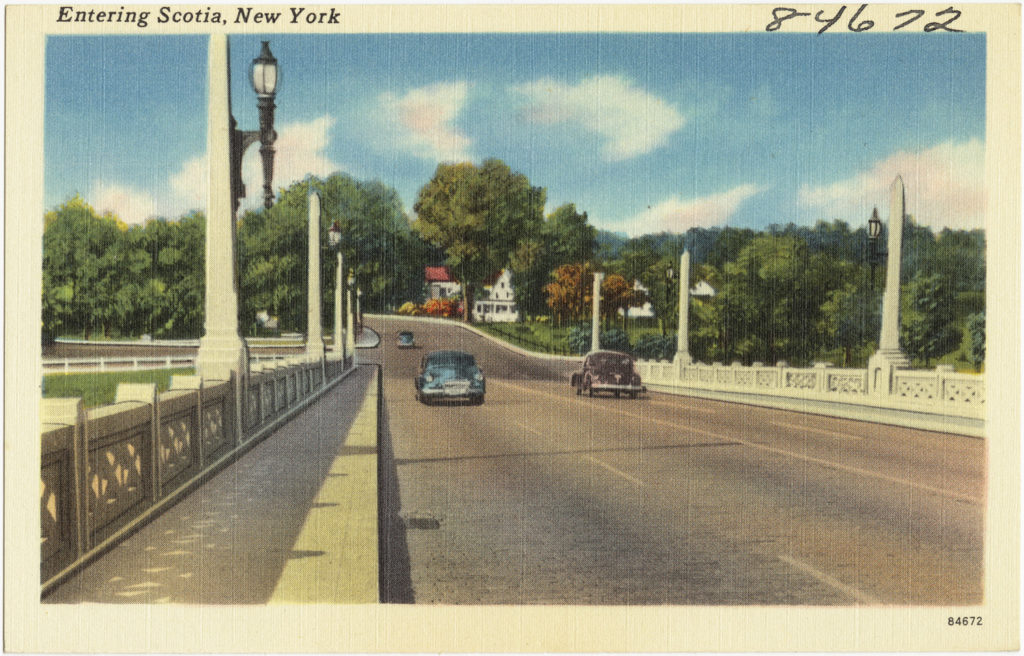
At the 1915 hearing on the need to build the Great Western Gateway Bridge between Schenectady and Scotia (and beyond), the Honorable Fred W. Cameron, Chairman of the Saratoga Reservation Commission (various commissions were forerunners of the State Parks system) came down to Schenectady to argue for the need for the bridge. First, he gave the history of how the State came to procure the springs of Saratoga:
The water had disappeared because of the fact that the gas had been taken out and sold for soda water fountains, to be put in these copper tubes and carried away at a great revenue to those who sold the gas, but at a great loss to Saratoga and the State of New York, because when the gas was taken out of the springs the water failed to flow and there was no Saratoga water five years ago flowing out of the ground at Saratoga, nor could any come out there by means of pumps, unless you went down very, very deep. The State passed a law forbidding the taking of gas and condemning the property – buying it in – until now the State owns about three hundred acres of ground, with over one hundred and forty springs. As soon as that gas was allowed to remain in the earth it began to bubble up in the water until now there is one hundred thousand gallons of water every day running out of the springs at Saratoga….
Then he got on to the topic, almost.
You know, Mr. Chairman, that people of late are traveling almost entirely by automobiles. More people come to Saratoga by automobile than ever did by train . . . Now, if people are going to travel by automobiles hereafter, as they are at present, it seems to me that it is good business to provide roads that are best adapted for that purpose . . . Every one who is driving an automobile, and most people who try to get out of the way of automobiles, know that an automobile is a vehicle usually driven at quite a high speed, that has a tremendous weight behind it, and a momentum that is very often underestimated, and that can make sharp turns around the corners, that it becomes an instrument of danger, not only to the occupants of the machine, but to the people who are driving or walking on the streets. If there is any worse place for driving an automobile than is presented by the road after you leave State street to go into Scotia [meaning Washington Avenue] I don’t know where it is. (Applause)
Then he really wound up the argument for the route at the end of State Street, the most expensive option by quite a bit, but the one that separated auto travel from the streetcar routes, although it was expected that streetcars to Scotia would be abandoned:
I don’t care anything about that cost for this reason, Mr. Chairman: I have driven in an automobile; I have driven along roads across a railway track; I have been across tracks where a short time before, because of lack of the expense of a few dollars in either having that track raised or depressed, there has been at that very same place an accident in which three of my best friends were killed, and I have thought what would be the cost. Why should the cost enter into the consideration when the life of the citizen is at stake? If you are going to invite me to drive my car along your streets and I go into a pitfall, or you do not provide for my safety, and tell me that it was because it cost too much, I tell you you come very near being a criminal. You have got no right to invite me into a place and then injure me, and you ought not to, and the State ought not to have a place that is not safe when one is acting in a reasonably careful manner, and I believe it is not safe to run automobiles down these streets, to cross around these curves going into Scotia. You have got to cross the street car tracks twice. The streets are not wide enough and they ought not to be so. Now, do not consider the cost when it comes to a question of life and death.
